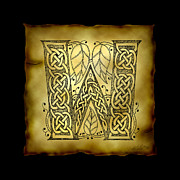February 3rd – 9th
4 hours – in class learning and practicing Chanoyu
8 hours – in wood shop
2 hours – reading Dhammapada, What is Japanese Architecture, Reading in the Brain
We began rough milling of the Port Orford Cedar this week. This is the wood type we will be using for the load baring beams in the tea house. The beams were acquired from a grove in Portland, planted to commemorate fallen soldiers after WWII. In the last decade, city landscapers foolishly chopped the tops of the trees off to protect powerlines, an action that ultimately would kill the trees. So a deal was struck to log and distribute the timber before they rotted and fell on their own. The school was able to acquire some of this timber and over the last three years it has been drying out in the timber shed behind the art annex. And this last Sunday, it was finally brought in to dry out even more in the arid micro-climate of the wood and metal shop. The large ban saw was taken to it to cut out the ruff sizes, and the moisture that was drawn in by the trees’ xylem and has sat there, locked inside the blocky cells of the woody tissue for the last decade or more, was finally released, inhaled by the lungs of students all widdling away quietly, broken by conversations of which plans to go with and what tools to use for the job, which will ultimately sculpt the trees form into a new shape, a Japanese tea house to be used by generations of students who come to the college afterwards.
But until the wood is done curing, and the transformation from tree to wood is complete, we cannot cut the wood any further and so construction must wait. So in the meantime, we’ve been focusing our time on Chanoyu: The Way of Tea, in particular Chabana, the simple yet elegant flower arrangements placed on an altar for the tea ceremony. On Monday, half of the class went to the woodshop to build hanaire, vases to hold the flowers, out of bamboo, and the other half stayed in class to make their own floral arrangments. On Wednesday, we switched. One principle of Chabana is to use plants that reflect the season, so Professor Tomoko sent us out to collect specimens from around Sem II. I grabbed a twig, a fern, a piece of small tumble weed bush, a twig with white berries, and a single long blade of green grass. When we returned, Tomoko had set up the altar space with a Tokonoma, a scroll with a phrase, word, or image that helps set the mood for the ceremony. The only instruction we had for arranging was to use the aesthetic principle of wabi-sabi, using A-symmetry and natural elements. It was a fun instinctual experience, where no forethought was necessarily needed, you just had to make sure you weren’t falling into symmetry too much. Ultimately I picked a long, forking barren twig, the short bushy tumbleweed plant, and the single long blade of grass. I was satisfied with my arrangement and Tomoko gave me her compliments; she said it captured the barren aspect of winter, yet hinted at spring the addition of the single green leaf. Everyone else’s Chabana were delightful as well. Tomoko would correct things or offer improvement not by telling or explaining but by simply making slight adjustments and then letting us figure out why. I think it was a fun experience for all. It was a good excercise in tuning into the subtle, subdued, contemplative energy of Chanoyu where aesthetics and kinesthetics blend.
Totals
This week: 14 hours
Exploratory texts include
- What Is Japanese Architecture: A Survey of Traditional Japanese Architecture by Kazuo Nishi and Kazuo Hozumi
- Tea in Japan: Essays on the History of Chanoyu ed. Varley and Kumakura
- In Praise of Shadows by Jun-ichiro Tanizaki
- The Dhammapada interpretted by Balangoda Ananda Maitreya and Thich Nhat Hanh
- Beyond Boundaries by Miguel Nicolelis
- Reading in the Brain: The Science and Evolution of a Human Invention by Stanislaus Dehaene
- The Poetics of Reverie by Gaston Bachelard
- Doing Goethean Science by Craig Holdredge
- The Secret Teaching of Plants by Stephen Buhner



